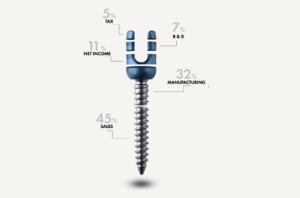Efficient materials management is crucial in the medical field, particularly when handling medical devices. With the right solutions, healthcare providers can streamline operations, reduce costs, and improve patient care. HST Pathways is a renowned player in this space, offering comprehensive materials management solutions specifically designed for Ambulatory Surgery Centers (ASCs). This post will compare and contrast HST Pathways with HUB Healthcare, highlighting how integrating the two platforms can provide a robust, cost-effective solution for managing medical devices.
Understanding HST Pathways
What is HST Pathways?
HST Pathways offers a suite of software solutions aimed at enhancing the operational efficiency of ASCs. Their materials management tools are designed to streamline inventory tracking, automate supply orders, and optimize overall resource utilization.
Key Features of HST Pathways
- Inventory Tracking: Real-time tracking of medical devices and supplies.
- Automated Supply Orders: Automatic replenishment orders based on usage and stock levels.
- Cost Management: Detailed reports and analytics to manage costs effectively.
- Compliance and Documentation: Ensures compliance with regulatory standards through comprehensive documentation.
Introducing HUB Healthcare
What is HUB Healthcare?
HUB Healthcare provides an innovative platform designed to improve healthcare operations through enhanced communication, coordination, and efficiency. While it offers a broad range of features, it is particularly noted for its cost-effective materials management solutions that can seamlessly integrate with existing systems like HST Pathways.
Key Features of HUB Healthcare
- Comprehensive Materials Management: Includes inventory tracking, supply chain management, and cost analysis.
- User-Friendly Interface: Easy-to-use platform that simplifies complex workflows.
- Data Analytics: Advanced analytics to monitor usage patterns and optimize stock levels.
- Free Access: Provides essential materials management tools at no cost.
Comparing HST Pathways and HUB Healthcare
Strengths of HST Pathways
- Specialization in ASCs: Tailored specifically for ASCs, ensuring features meet the unique needs of these facilities.
- Robust Inventory Tools: Advanced tools for detailed inventory tracking and automated supply orders.
- Comprehensive Analytics: In-depth reports and analytics for cost management and operational efficiency.
Strengths of HUB Healthcare
- Cost-Effective: Offers free access to essential materials management tools, making it an excellent option for budget-conscious facilities.
- Ease of Integration: Designed to integrate seamlessly with other systems, including HST Pathways.
- Broad Functionality: While focused on materials management, HUB also provides extensive features for overall healthcare operations, enhancing coordination and communication.
Integration Benefits
Integrating HST Pathways with HUB Healthcare combines the strengths of both platforms, providing a comprehensive, cost-effective solution for materials management.
How to Integrate HST Pathways with HUB Healthcare
Step 1: Assess Your Current System
Evaluate your current materials management system and identify areas where HST Pathways and HUB Healthcare can complement each other. Determine which features from each platform will best meet your needs.
Step 2: Plan the Integration
Develop a detailed integration plan that includes timelines, responsibilities, and key milestones. Ensure both IT teams are involved to facilitate seamless integration.
Step 3: Data Synchronization
Ensure that data from HST Pathways can be synchronized with HUB Healthcare. This might involve setting up data transfer protocols, APIs, or other integration tools to enable real-time data sharing.
Step 4: Training and Implementation
Train your staff on the integrated system to ensure they can effectively use both HST Pathways and HUB Healthcare. Provide ongoing support to address any issues and optimize the use of the integrated system.
Step 5: Monitor and Optimize
After implementation, continuously monitor the performance of the integrated system. Gather feedback from users and make necessary adjustments to improve efficiency and effectiveness.
Conclusion
HST Pathways and HUB Healthcare both offer robust materials management solutions for medical devices. By integrating the two platforms, healthcare providers can leverage the strengths of each, achieving enhanced efficiency, cost savings, and improved patient care. HUB Healthcare’s cost-effective, user-friendly tools complement the advanced features of HST Pathways, making them a powerful combination for any healthcare facility.
How HUB Healthcare Can Help
HUB Healthcare offers a comprehensive solution designed to enhance communication in healthcare, streamline care coordination, and improve overall workflow efficiency. Our platform includes features such as medical case management software, healthcare document management, and healthcare analytics to ensure that all aspects of patient care are optimized. By leveraging HUB Healthcare’s robust tools, organizations can reduce workflow bottlenecks, automate repetitive tasks, and facilitate better collaboration among healthcare providers. This not only improves work quality but also enhances patient outcomes, making HUB Healthcare an essential partner in achieving healthcare excellence. Care Coordination






